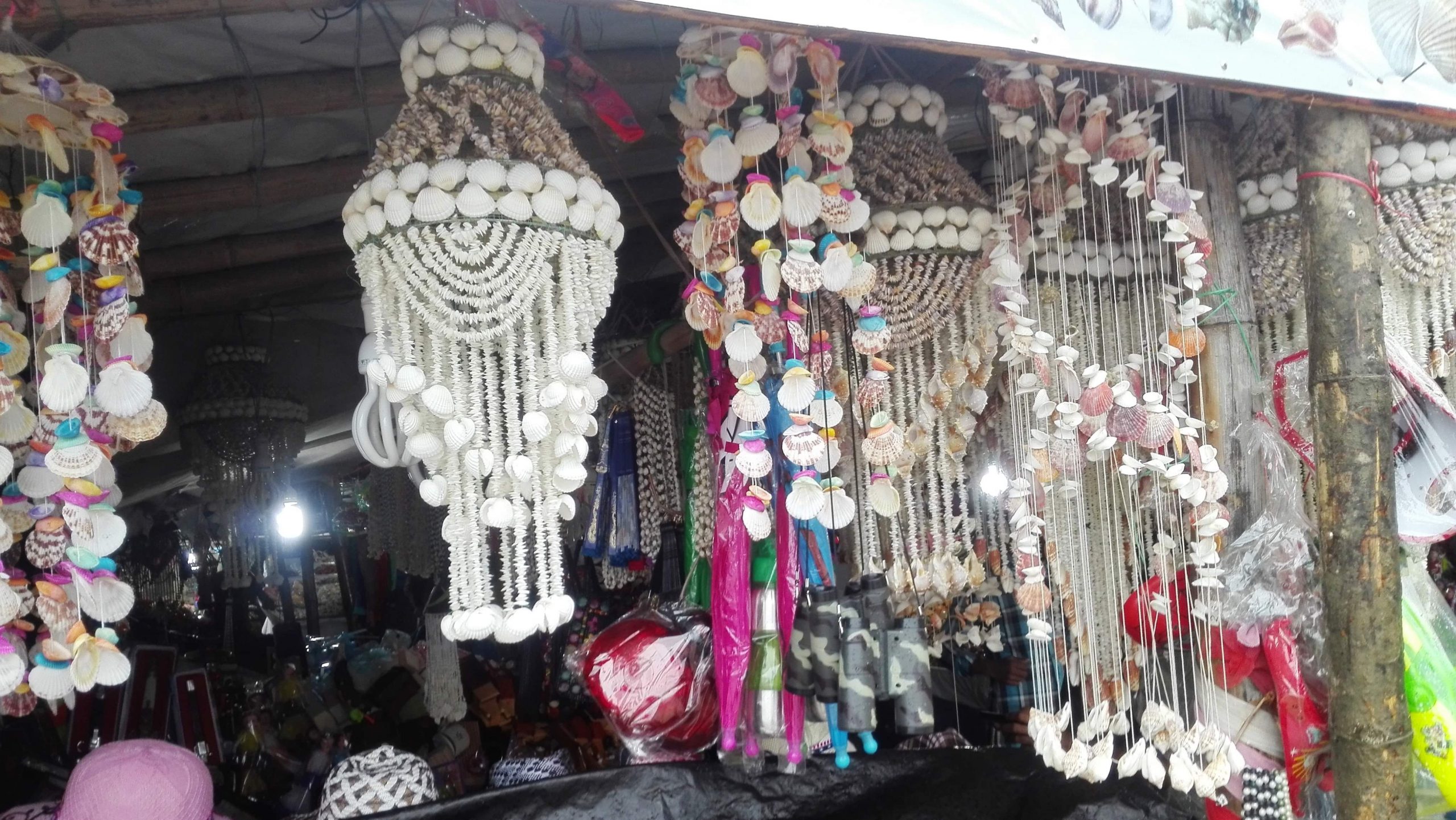A trip to Cox’s Bazar almost remains incomplete if you don’t pay a visit to the famous Burmese market. A quick visit to the Burmese market will make your beach trip more exciting.
History of the market
This market evolved from the initiative taken by a Burmese woman in 1962. On a small scale, she set up a kiosk of local Rakhine handicrafts, bags, lungi, bedsheets, churut (traditional cigars), etc. in her home adjacent to the Burmese Primary School in Tekpara. The native and foreign tourists visiting Cox’s Bazar used to take a glance at the things in her kiosk.
Anticipating the demand of the tourists, she commercially opened a store named ‘Unang Cox’s Bazar Cottage Industries’ in front of her house. One by one, Tin tin Burmese store, Rakhine store, Ume store, Nurani emporium, Bibi Fashion Diamond store, etc. were formed. Gradually, that small kiosk turned into the large market that we see today. Though initially there was a shortage in the variety of products, later on, Burmese products like lungi, thaami, flip-flops, pickles, balms, herbs, different types of stones, crafts made of seashells and wood were added to the queue.

Ethnicity of vendors
One might consider the Burmese store to be a store run by Burmese people having Burmese goods. Although the stores do have Burmese products, the vendors are not Burmese. They are Rakhines, more specifically, of Arakan descent. Ethnically and culturally, the Rakhines have many similarities with the Burmese. However, there are linguistic differences.
In the beginning, the stores were run by Rakhine women. But currently, many Bengalis are also engaged in the business. Many Hindu and Muslim businessmen have built shopping malls that are familiar with the name of the ‘Burmese market’.
Present condition of the market
At present, the Rakhine vendors are very few in number. Now the original form of the Burmese market is barely visible. Instinctively, people have an attraction to foreign culture and foreign products. That’s why as the sun sets during tourist season, the Burmese market turns into an assemblage of visitors. The sellers earn a satisfactory amount of profit. According to a seller in the Burmese market situated near the Sugandha point, during the tourist season, per day the total earning becomes approximately BDT 30,000-50,000.

Nature of products
As the number of stores is increasing, so is the variety and quantity of products. However, due to the ubiquity of modernized products, traditional products have almost become extinct. As the Chinese products are abundant, we hardly find the Burmese handmade products. Even they import the snails, seashells, and conches. They collect very few things from our ocean.

The products starting from BDT 10 to BDT 500 are available here. The visits of journalists often upset the vendors of journalists. There is a restriction on collecting seashells and conches from the sea. This restriction is for nothing but the welfare of our environment. Collecting snails, seashells, or conches from the sea might hamper the ecosystem. Nevertheless, the fishermen are still indulged in this act to fulfilling the demand of the Burmese market.
Now let’s look at the most popular products of the Burmese market. These are:
Achar (pickles)
Burmese pickles in Cox’s Bazar are mentionable. These are different from our traditional homemade pickles. Pickles of different fruits such as mango, jujube, tamarind, olive, etc. of different price ranges are available. One can find a kind of sweet pickled mango made of thin slices of mango and molasses. There are delicious pickles of sweet tamarind and sugar. The prices of pickles range from BDT 15- 200.
Nuts
The Burmese walnuts imported from Myanmar are special attractions. These nuts are flour and sugar-coated. It is hard to find a tourist visiting Cox’s Bazar who has not tasted these nuts. These are available in plastic bags or jar costing BDT 40 – BDT 150.
Candies
One can find a wide variety of candies in the market. Peanut, coffee, butterscotch, fruit, milk, etc. flavored candies appeal both the kids and adults. Their price ranges from BDT 60 to BDT 300.
Dry fruits
Dehydrated fruits such as pineapples, peaches, jujubes, tamarinds, cherries, and even mangoes are also available at prices starting from BDT 100.
Besides enjoying the beautiful sunset on the beach, one can roam in this market and taste the delicious pickles, nuts, candies, and dry fruits in Cox’s Bazar.
How to go
The Burmese market is 4 km away from the Upazila Council. Presently, there are Burmese stores at Sugandha and Labani points too.
You may read about:
· Age that wants to explore alone
· The future of Bangladeshi children’s film
· History of Children Movies In Bangladesh


